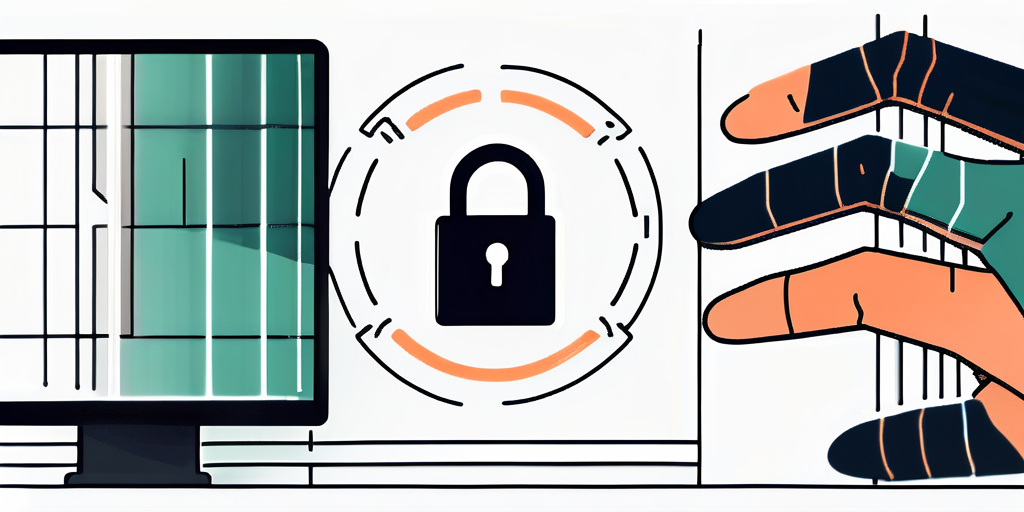Cybersecurity professionals are constantly seeking ways to hone their skills and stay ahead of the ever-evolving threats in the digital landscape. Two popular methods for developing expertise in the field are CTF competitions and real-world penetration testing. While both approaches have their merits, they differ significantly in terms of purpose, process, and application. Understanding these differences is crucial for aspiring professionals to make informed decisions about their training and career paths.
Understanding CTF Competitions
The Basics of CTF Competitions
CTF stands for Capture the Flag, which is a type of cybersecurity competition that challenges participants to solve various security-related puzzles or challenges. These challenges generally require a combination of technical skills, problem-solving abilities, and creative thinking. CTF competitions typically encompass a wide range of domains, including cryptography, reverse engineering, web exploitation, and forensics.
Participants compete individually or in teams to solve these challenges and “capture the flags” by retrieving hidden information or exploiting vulnerabilities. The goal is not only to test participants’ technical knowledge but also to foster teamwork, improve communication, and enhance critical thinking skills.
CTF competitions have gained significant popularity in recent years, attracting participants from all over the world. The competitions are often hosted by universities, cybersecurity organizations, or industry conferences. They can range in duration from a few hours to several days, with some of the larger events spanning multiple weeks.
One of the key aspects of CTF competitions is the diversity of challenges presented to participants. Each challenge is designed to simulate real-world scenarios and test different aspects of cybersecurity knowledge. For example, a cryptography challenge may require participants to decrypt a message using various cryptographic techniques, while a web exploitation challenge may involve finding and exploiting vulnerabilities in a web application.
CTF competitions also often incorporate elements of gamification to make the experience more engaging and enjoyable. Participants earn points for solving challenges, and the leaderboard displays the rankings in real-time. This adds an extra layer of excitement and motivation, as participants strive to climb up the leaderboard and outperform their competitors.
The Role of CTF in Cybersecurity Training
CTF competitions play a crucial role in cybersecurity training and education. They provide a safe and controlled environment for individuals to gain hands-on experience in a wide array of cybersecurity domains. Participating in CTFs can help aspiring professionals develop practical skills, learn new techniques, and stay up to date with the latest trends in the field.
Furthermore, CTF competitions offer a platform for networking and collaboration. Participants have the opportunity to connect with like-minded individuals, share knowledge, and learn from one another. The competitive nature of CTFs also fosters a sense of camaraderie and friendly rivalry among participants, creating an engaging and dynamic learning experience.
Many cybersecurity professionals credit their success to the skills and knowledge they gained through participating in CTF competitions. The hands-on nature of these competitions allows participants to apply theoretical concepts in a practical setting, honing their problem-solving abilities and critical thinking skills.
In addition to individual skill development, CTF competitions also contribute to the overall advancement of the cybersecurity field. By pushing the boundaries of what is known and challenging participants to think outside the box, CTFs drive innovation and encourage the development of new techniques and tools.
Furthermore, CTF competitions often attract the attention of industry professionals and organizations looking to identify talented individuals. Winning or performing well in a CTF can serve as a valuable credential and open doors to job opportunities or internships in the cybersecurity field.
In conclusion, CTF competitions are an integral part of cybersecurity training and education. They provide a unique and immersive learning experience, allowing participants to develop practical skills, foster teamwork, and stay up to date with the latest trends in the field. Whether you are a beginner looking to get started in cybersecurity or an experienced professional seeking to enhance your skills, participating in CTF competitions can be a rewarding and valuable endeavor.
The Nature of Real-World Penetration Testing
Penetration testing, also known as ethical hacking, plays a crucial role in assessing the security of computer systems, networks, or applications. Unlike CTF competitions, real-world penetration testing serves a different purpose and involves a more comprehensive approach to identify vulnerabilities that could be exploited by malicious actors.

The Purpose of Penetration Testing
The primary objective of penetration testing is to evaluate the effectiveness of an organization’s security measures and provide recommendations for mitigating risks. By simulating real-world attack scenarios, penetration testers can identify weaknesses in the system and help organizations strengthen their defenses.
During a penetration test, ethical hackers employ a combination of automated tools and manual techniques to assess the security posture of the target environment. By identifying vulnerabilities, they can help organizations proactively address potential threats and protect sensitive data from unauthorized access.
The Process of Real-World Penetration Testing
Real-world penetration testing typically follows a standardized methodology to ensure a systematic and thorough assessment. The process involves several phases, each with its own objectives and techniques.
The first phase, reconnaissance, involves gathering information about the target environment. This includes identifying the organization’s assets, such as servers, applications, and network infrastructure. Ethical hackers use various techniques, such as open-source intelligence (OSINT) gathering, to gain insights into the target’s digital footprint.
Once the reconnaissance phase is complete, the next step is scanning. During this phase, penetration testers use specialized tools to identify vulnerabilities and weaknesses in the target environment. This includes conducting port scans, vulnerability scans, and service enumeration to determine potential entry points for attackers.
After scanning, the enumeration phase begins. This involves gathering detailed information about the target’s systems and services. Ethical hackers aim to identify potential vulnerabilities that could be exploited to gain unauthorized access. This phase often requires a combination of manual techniques and automated tools to gather as much information as possible.
Once vulnerabilities have been identified, the exploitation phase begins. Ethical hackers attempt to exploit the identified vulnerabilities to gain unauthorized access to the target environment. This may involve techniques such as privilege escalation, password cracking, or exploiting software vulnerabilities.
Finally, the post-exploitation phase focuses on assessing the impact of successful exploits and documenting the findings. Ethical hackers aim to determine the extent to which an attacker could compromise the target environment and access sensitive information. Thorough documentation and reporting of findings are essential to ensure that vulnerabilities are properly addressed and the organization can improve its security posture.
In conclusion, real-world penetration testing goes beyond the challenges of CTF competitions. It involves a comprehensive understanding of the target environment, the client’s business objectives, and any regulatory or legal considerations. By following a standardized methodology and employing a combination of automated tools and manual techniques, ethical hackers can help organizations identify vulnerabilities, strengthen their defenses, and protect against potential cyber threats.
Comparing CTF Competitions and Penetration Testing
CTF competitions and penetration testing are two distinct activities in the field of cybersecurity. While they serve different purposes, they share some similarities and have notable differences.

Similarities Between CTF and Penetration Testing
Both CTF competitions and penetration testing require participants to demonstrate technical skills, problem-solving abilities, and a strong understanding of cybersecurity concepts.
Participants in both CTFs and penetration testing must adopt a proactive mindset, think outside the box, and analyze complex scenarios. They need to be able to identify vulnerabilities, exploit them, and provide recommendations for remediation.
Effective communication and collaboration are paramount in both domains. Participants often need to work together, sharing insights and knowledge to solve challenges or address vulnerabilities. This collaborative aspect not only enhances the learning experience but also mirrors the real-world scenario where security teams work together to protect organizations.
Differences Between CTF and Penetration Testing
Despite their commonalities, CTF competitions and real-world penetration testing are fundamentally different in several aspects.
Firstly, CTF competitions are more focused on learning and skill development, while penetration testing aims to identify vulnerabilities in production environments. CTFs provide a controlled environment with pre-defined challenges, allowing participants to practice and enhance their technical abilities. In contrast, penetration testing involves working on real systems with real implications, where the consequences of mistakes can be significant.
Secondly, CTF competitions often emphasize speed and efficiency, as participants race against the clock to capture flags. The time pressure in CTFs simulates the urgency and intensity of real-world scenarios. On the other hand, penetration testing prioritizes thoroughness and attention to detail to ensure comprehensive security assessments. The goal is to identify as many vulnerabilities as possible, leaving no stone unturned.
Lastly, CTFs tend to focus primarily on the technical aspects of cybersecurity, such as network security, cryptography, and reverse engineering. While these technical skills are crucial in penetration testing as well, real-world assessments also consider business risks, compliance requirements, and human factors. Penetration testers need to assess the impact of vulnerabilities on the organization’s operations, reputation, and compliance with industry regulations.
In conclusion, while CTF competitions and penetration testing share some similarities, they serve different purposes and have distinct characteristics. Both activities contribute to the development of cybersecurity professionals and play crucial roles in securing organizations against cyber threats.
The Value of CTF Competitions in Penetration Testing Training
CTF (Capture the Flag) competitions have emerged as valuable training grounds for aspiring penetration testers. These competitions provide a platform for individuals to enhance their technical skills, gain a deep understanding of different attack vectors, and explore various cybersecurity domains.
Participating in CTFs not only hones technical skills but also fosters problem-solving abilities. As individuals engage in these competitions, they encounter challenges with varying degrees of complexity. This forces them to think critically, analyze systems for vulnerabilities, and develop strategies to exploit them.
CTFs offer a controlled environment where participants can experiment and learn without the fear of real-world consequences. However, the true value of these competitions lies in the ability to transfer the skills acquired to real-world scenarios.
Skills Gained from CTF Competitions
By participating in CTF competitions, individuals gain a wide range of skills that are highly relevant to the field of penetration testing. These skills include:
- Technical Proficiency: CTFs require participants to have a deep understanding of various tools, technologies, and programming languages. This helps individuals develop a strong foundation in the technical aspects of penetration testing.
- Attack Vector Knowledge: CTFs expose participants to different attack vectors, such as web application vulnerabilities, network exploits, cryptography challenges, and more. This broadens their knowledge and equips them with the ability to identify and exploit vulnerabilities in diverse systems.
- Cybersecurity Domain Exploration: CTFs cover a wide range of cybersecurity domains, including but not limited to web security, reverse engineering, forensics, and cryptography. This allows participants to explore and gain insights into various aspects of cybersecurity.
These skills acquired through CTF competitions lay a solid foundation for individuals aspiring to become penetration testers.
Transferring CTF Skills to Real-World Scenarios
While CTF competitions provide an excellent training ground, successfully applying the knowledge gained from these competitions in real-world penetration testing requires additional skills and considerations.
One of the key challenges in transferring CTF skills to real-world scenarios is the need for adaptability. Real-world environments are often complex and dynamic, requiring penetration testers to quickly adapt to changing circumstances and unforeseen obstacles. This adaptability is crucial in effectively identifying and exploiting vulnerabilities.
Creativity is another essential skill that comes into play when transitioning from CTFs to real-world penetration testing. In CTF competitions, participants often encounter challenges that have predefined solutions. However, real-world scenarios demand creative thinking to identify unique vulnerabilities and develop innovative approaches to exploit them.
Furthermore, real-world penetration testing often involves navigating complex organizational structures. Understanding the intricacies of an organization’s network, policies, and procedures is essential to conduct successful penetration tests. This requires individuals to develop strong communication and interpersonal skills to effectively collaborate with various stakeholders.
Therefore, aspiring professionals must recognize the limitations and differences between CTFs and real-world penetration testing. By doing so, they can effectively transfer their skills and bridge the gap between the two domains, ultimately becoming proficient and successful penetration testers.
The Limitations of CTF Competitions in Real-World Application
The Gap Between CTF and Real-World Penetration Testing
Despite their benefits, CTF competitions have limitations when it comes to preparing individuals for real-world penetration testing. While CTFs aim to replicate certain aspects of real-world scenarios, they often simplify and abstract complex attack vectors and scenarios found in actual systems.
Furthermore, CTF environments may not accurately reflect the diverse technological landscapes and business processes encountered in real-world environments. This can lead to a lack of awareness and experience in handling complex systems, interacting with stakeholders, and understanding the impact of vulnerabilities on business operations.
Overcoming the Limitations of CTF Competitions
To overcome the limitations of CTF competitions, aspiring penetration testers should complement their CTF experiences with real-world projects and hands-on training. Engaging in practical cybersecurity projects or internships can provide exposure to the complexities and challenges faced in real-world scenarios.
Mentorship and guidance from experienced penetration testers can also help bridge the gap between CTF competitions and real-world application. Obtaining certifications relevant to penetration testing, such as Offensive Security Certified Professional (OSCP) or Certified Ethical Hacker (CEH), can validate skills and enhance credibility in the field.
Ultimately, combining CTF competitions with real-world experiences and continuous learning is key to becoming a well-rounded and proficient penetration tester.
In Conclusion
CTF competitions and real-world penetration testing serve distinct purposes in the realm of cybersecurity. While CTFs provide valuable training grounds to develop technical skills and problem-solving abilities, real-world penetration testing caters to evaluating the effectiveness of security measures in complex environments.

Understanding the differences between these two approaches is crucial for individuals seeking to pursue a career in penetration testing. By leveraging the strengths of CTF competitions and bridging the gap with real-world experiences, aspiring professionals can become skilled ethical hackers well-prepared to tackle the challenges in the ever-changing cybersecurity landscape.
Blue Goat Cyber is here to assist if you’re looking to elevate your organization’s cybersecurity posture and ensure compliance with industry regulations. As a Veteran-Owned business specializing in a range of B2B cybersecurity services, including medical device cybersecurity, penetration testing, HIPAA, FDA Compliance, SOC 2, and PCI penetration testing, we’re committed to safeguarding businesses and products from cyber threats. Contact us today for cybersecurity help!


